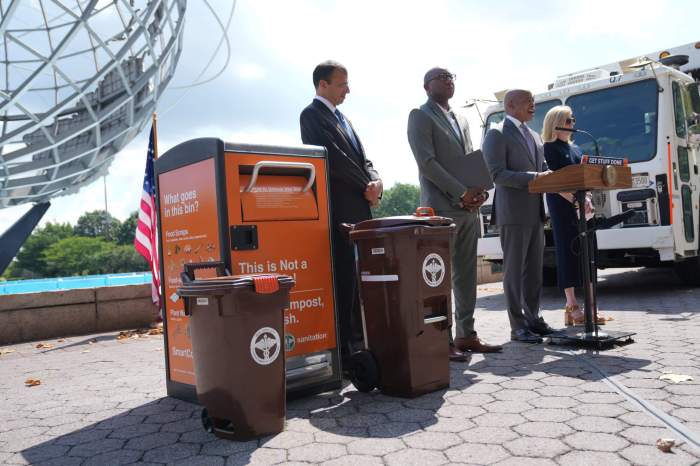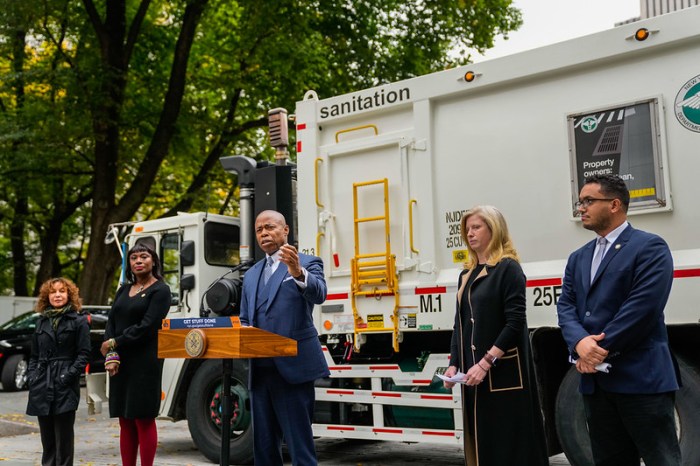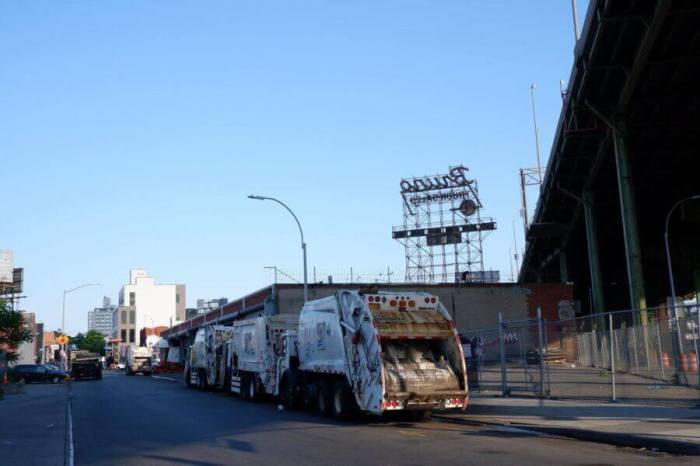Beginning today, New York City’s food-related businesses will face fines for failing to put their trash in solid containers, rather than in simple bags on the sidewalks — marking the latest front in Mayor Eric Adams’ ongoing “War on Rats.”
Businesses that serve food have technically been required to use containers for waste collection since Aug. 1, but have faced only written warnings if they violated that law.
Since the warning period began, the Department of Sanitation has written over 21,000 citations to businesses in the five boroughs.
Starting today, though, authorities will begin doling out monetary fines for noncompliance — with $50 fines for a first offense, $100 for a second offense, and $200 for all subsequent offenses.
While the monetary fines will begin today for food-related businesses, all chain businesses (with five or more locations in the city) will also be forced to containerize their trash beginning on Sept. 5, regardless of what they sell.
When that goes into effect, the DSNY says that five million pounds of trash per day will be required to be placed in solid containers — marking 25% of all business waste in the five boroughs.
In order to comply with the new rule, businesses must put their waste in solid containers that have tight-fitting lids.
That, according to the mayor, will help mitigate the citywide prevalence of rats, who feast on food scraps that have traditionally been left on the sidewalks in easy-to-penetrate garbage bags.
“As I say over and over again, I hate rats, and rats love garbage bags, we cannot co-exist,” Adams said when announcing the new measure on June 28. “New York City used to be known for our mean streets, going forward, we’re going to be known for our clean streets. Today we take two giant steps forward towards that goal by announcing new rules to place our garbage paying containers.”
One study found that there are over 3 million rats in the city, leading Adams to hire Kathleen Corradi as his now-famous “rat czar.”
“Rats are a symptom of systemic issues, including sanitation, health, housing, and economic justice,” Corradi said when accepting the job in April. “You can’t just deal with one part of the problem and call it a day. We need system wide solutions, strong leadership and an engaged population to join the efforts. That’s where I come in. As New York City’s first director of rodent mitigation, I will bring a science and systems based approach to reducing New York City’s rat population. With a strong focus on cutting off the food, water and shelter rats need to survive.”






































